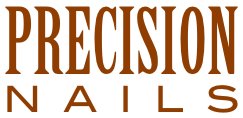Given all the products necessary to provide nail services in your salon, it only makes sense that your clients would need at least some products to care for their nails between appointments. For example, would you rather have your clients remove a hangnail with their teeth, or with cuticle nippers? Would you rather have them buy a cheap pair at the drugstore, or your favorite brand directly from you? Many professional nail products would be appropriate and profitable to retail, yet most salons limit themselves to retailing a predictable and inexpensive few, like cuticle oil. As the holiday season fast approaches, it’s the ideal time to upscale your retail with professional nail products.
Please note that before retailing anything, you need to obtain the proper licensing as required by your state government. As a California business owner, I have a seller’s permit from the Board of Equalization (BOE), and must collect 7.25% sales tax (the rate varies throughout the state). Every quarter, I use the BOE’s convenient electronic/online services to file a return and make a payment based on my sales activity. Check with your state to ensure your compliance; all the information should be available online.
One of the benefits of being a licensed manicurist/nail technician is access to a great variety of professional nail products: from disposable items like nail files and buffers, to consumable items like lotion and polish, to more permanent equipment like metal tools and paraffin warmers. I choose products based on various factors (quality, price, convenience, availability, exclusivity, technical support, customer service, etc.) and spend accordingly. In fact, many of my colleagues would say they spend and accumulate too much (“product junkies”). Clients make choices based on the same factors and can have the same propensity for (over)spending, though fewer options. Ideally, your salon should be their best and most trusted source for quality nail products.
In a past article, Converting Retail Customers Into Loyal Clients (Stylist, December 2011), I described in more detail how retailing professional nail products satisfies the needs of existing clients and attracts new ones. Your product should be displayed prominently in a clean and organized way; if possible, use marketing materials and signage supplied by the manufacturer. Pricing should be competitive; generally, I use the manufacturer’s “salon price.” The selection of retail products at Precision Nails remains fairly consistent throughout the year; I make room for new products, like seasonal polish collections, by eliminating discontinued or less popular ones. The quantity on hand can vary depending on the season; for example, I tend to stock more Havaianas (rubber flip-flops) during the summer when more tourists visit.
While some salon owners fill their shelves with retail items that have nothing to do with nails (candles, jewelry, etc.), especially for the holidays, I do not. My business is a nail salon, not a gift store or flea market. That being said, professional nail products make great gifts. They can be personal, thoughtful and practical: both affordable and trendy like polish, or more expensive and permanent like cobalt stainless nail trimmers. Gift cards for a specific dollar amount are another option for clients who want to give someone else the power to choose between your services and/or products. I’ve set a minimum of $25 to cover the costs of the card and its packaging. Salon management software makes tracking easy.
Understandably, investing in retail can be expensive; however, if you focus on products you already use, they should be more manageable and easier to promote. Partner with your suppliers and order quantities that ensure bulk/discounted pricing. For example, I purchase unscented exfoliating scrub and massage lotion in 2-gallon bulk containers from which 3/4-ounce portion cups are filled for use later during services. Not only does this give me the best pricing and quantity control, it eliminates cross-contamination. When clients comment on how smooth their skin feels afterwards, we mention that the same products are packaged by the manufacturer for retail, both unscented and scented. I currently stock and display six different scents of the retail-sized shower gel, exfoliating scrub, body butter and massage lotion, with a minimum of three each. Clients can select their favorite scent(s) by sampling the lotions (8 ounce with pump dispenser) labeled as “testers.”
Some final thoughts:
- Use your favorite brands/products during services and they will virtually sell themselves. Your services are like a paid product demonstration, minus the sales pitch.
- Adjust your retail offerings according to demand, but don’t feel obligated to sell everything you use, or a brand/product you don’t. For example, I don’t sell the products/equipment related to gel enhancements.
- Rather than discount your services (your time), reward clients by offering free product. The perceived value is greater than your actual cost, and it may lead to future product sales.




